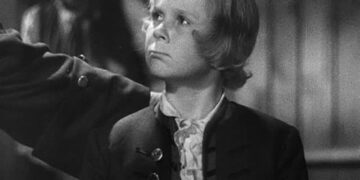My journey into the world of literature has taken me through many intriguing landscapes, but none have been as captivating as the universe crafted by Amélie Nothomb in ‘Fear and Trembling.’
This literary gem, published in 1999, is a vivid account of culture shock, hierarchical dynamics, and the complexities of communication. The book has been a beacon of fascination for readers worldwide, inspiring countless debates and interpretations.
In this piece, I will strive to unwrap the many layers of ‘Fear and Trembling,’ providing an in-depth book summary, a thorough character analysis, and a comparison with Alain Corneau’s 2003 adaptation.
The aim is to facilitate a broader understanding and appreciation of this compelling narrative.
Who’s Who: Character Analysis
Every story is brought to life by its characters, and ‘Fear and Trembling’ is no exception. Amélie, the protagonist, is an intriguing figure.
A Belgian woman working in Japan, she epitomizes the struggle of an outsider trying to fit into a culture vastly different from her own.
The characters of Saito-san and Fubuki Mori are equally compelling. Saito-san, Amélie‘s immediate superior, embodies the rigidity and discipline of the traditional Japanese corporate structure.
On the other hand, Fubuki Mori, a young and ambitious Japanese woman, represents the conflict between modern aspirations and traditional obligations.
A Comprehensive Book Summary of ‘Fear and Trembling’
‘Fear and Trembling’ is a captivating narrative that explores the protagonist Amélie’s stint at Yumimoto Corporation in Japan.
The story starts with Amélie, filled with enthusiasm and a desire to immerse herself in Japanese culture, joining Yumimoto. However, her dreams soon collide with harsh realities as she struggles to navigate the labyrinthine hierarchy and stringent work ethics of the corporation.
The crux of the story revolves around Amélie’s interactions with her superiors, Saito-san and Fubuki Mori. Amélie’s attempts to break the mold and bring a fresh perspective to her work environment are met with disdain and resistance, leading to a series of demotions.
From an interpreter to a restroom attendant, her journey is a poignant reflection of the cultural and communication chasms that can exist in a globalized world.
The climax of the story is both heartrending and thought-provoking, as Amélie, defying all odds, manages to find a sense of fulfillment and self-worth amidst her trials. Through her journey, Nothomb paints an insightful picture of the human spirit’s resilience and the universal quest for identity and acceptance.
When and Where ‘Fear and Trembling’ Takes Place
‘Fear and Trembling’ is set in the buzzing metropolis of Tokyo, Japan, in the 1990s. This setting forms an integral part of the narrative, mirroring the protagonist’s feelings of alienation and her struggle to adapt to a foreign culture.
The towering Yumimoto Corporation building, where most of the story unfolds, serves as a microcosm of Japanese corporate life.
The 1990s setting also reflects a period of significant economic and social changes in Japan. The bursting of the economic bubble and its aftermath had profound impacts on the corporate sector, and Nothomb masterfully weaves these underlying currents into her narrative.
Comparing ‘Fear and Trembling’ with Alain Corneau’s 2003 Adaptation
In 2003, Alain Corneau adapted Nothomb’s ‘Fear and Trembling’ into a critically acclaimed film. Corneau’s adaptation stays largely faithful to the book, preserving the narrative’s essence and the protagonist’s emotional journey.
However, the film adds a layer of visual storytelling, using the aesthetics of Japanese architecture and design to highlight Amélie’s alienation further.
The performances, particularly Sylvie Testud’s portrayal of Amélie, add depth to the characters, making their struggles and triumphs more palpable.
On the flip side, some subtleties of the book, especially the nuanced cultural commentary, get lost in the adaptation. While the film is a commendable effort, it doesn’t fully capture the book’s intricate exploration of culture and identity.
Parent Guide: Content Advisories for ‘Fear and Trembling’
‘Fear and Trembling’ deals with mature themes such as cultural alienation, workplace harassment, and emotional turmoil. While the book doesn’t contain explicit content, it does depict some emotionally charged situations that might be challenging for younger readers.
It’s advisable for parents to read the book first and discuss its themes with their children. This can facilitate a better understanding of the narrative and its underlying messages.
The film adaptation, rated PG-13, also warrants parental guidance due to its depiction of workplace conflicts and emotional distress.
Noteworthy Quotes from ‘Fear and Trembling’
‘Fear and Trembling’ is replete with insightful quotes that capture the essence of the narrative and its themes.
Here are a few that stood out for me:
- “What a strange punishment of a God who gives us the desire to love but not the power to state it.”
- “In Japan, the winner is the one who waits. You have to kill the time that kills you.”
- “I was going to learn a lot from this woman who, by killing me softly, was going to give me a second birth.”
These quotes encapsulate the book’s exploration of love, patience, and rebirth, adding depth to the narrative and resonating with readers long after they’ve turned the last page.
The Influence of Johann Sebastian Bach on the Soundtrack
The film adaptation of ‘Fear and Trembling’ features a captivating score that complements the narrative’s mood and tone. The soundtrack, influenced by Johann Sebastian Bach, adds a layer of sophistication and emotional depth to the film.
Bach’s compositions, known for their complexity and emotive power, mirror the protagonist’s inner turmoil, her struggles with alienation, and her journey towards acceptance.
The soundtrack, much like Bach’s music, serves as a powerful medium of storytelling, enhancing the narrative’s impact.
Dress Like Characters: Tips for ‘Fear and Trembling’ Cosplay
For fans looking to bring the characters of ‘Fear and Trembling’ to life, cosplay can be an exciting venture. Here are a few tips:
For Amélie, dress in conservative business attire typical of a 1990s corporate environment. A simple suit, a modest blouse, and a pair of sensible shoes would do the trick.
For Fubuki Mori, go for a blend of traditional and modern styles. A sleek business suit paired with a classic Japanese hairdo could capture her character’s essence.
For Saito-san, opt for a typical Japanese corporate look – a dark suit, a crisp white shirt, and a tie. Round off the look with a stern facial expression, reflecting his stern and authoritative character.
Unearthing the Curiosities of ‘Fear and Trembling’
‘Fear and Trembling’ is filled with curiosities that add richness to the narrative. For instance, the title itself is a nod to Soren Kierkegaard’s philosophical work, hinting at the existential themes explored in the book.
Another interesting aspect is the narrative’s semi-autobiographical nature. Nothomb’s own experiences as a foreigner working in Japan inform much of the story, lending it authenticity and depth.
A Brief Biography of Amélie Nothomb and Her Works
Amélie Nothomb, born in Kobe, Japan, in 1967, is a prolific Belgian author known for her distinctive narrative style and incisive commentary on culture and identity.
‘Fear and Trembling’ is one of her most celebrated works, earning her the Grand Prix du roman de l’Académie franí§aise.
Nothomb’s other notable works include ‘Hygiene and the Assassin,’ ‘The Character of Rain,’ and ‘Tokyo Fiancée,’ each showcasing her ability to craft compelling narratives that resonate with readers worldwide.
Ending Explained: Unraveling the Conclusion of ‘Fear and Trembling’
The ending of ‘Fear and Trembling’ leaves a lasting impact, wrapping up Amélie’s journey in a poignant yet hopeful manner. Despite her trials, Amélie finds a sense of fulfillment and self-worth, choosing to view her experiences as lessons rather than failures.
Her final encounter with Fubuki Mori, where she expresses her admiration and respect for her, serves as a moment of catharsis. It underlines the theme of acceptance, both of oneself and others, encapsulating the narrative’s core message.
Exploring the Possibility of a Remake, Sequel, or Spin-Off
Given the narrative’s richness, a remake, sequel, or spin-off of ‘Fear and Trembling’ seems like an intriguing prospect.
A remake could offer a fresh perspective on the story, while a sequel or spin-off could delve deeper into the characters’ lives, exploring their journeys beyond the confines of Yumimoto Corporation.
However, such an endeavor would require a nuanced understanding of the original narrative and its themes. It would need to stay true to the spirit of Nothomb’s work while bringing something new to the table.
Other Media by Alain Corneau
Alain Corneau, the filmmaker behind the 2003 adaptation of ‘Fear and Trembling,’ has an impressive body of work.
His other notable films include ‘All the Mornings of the World,’ ‘Love Crime,’ and ‘Black Box,’ each showcasing his flair for storytelling and his ability to bring complex narratives to life.
Corneau’s films, much like ‘Fear and Trembling,’ are marked by their depth, emotional resonance, and attention to detail, making them a must-watch for cinema enthusiasts.
Similar Media to ‘Fear and Trembling’
For those enchanted by ‘Fear and Trembling,’ there are several similar books and films to explore.
‘The Wind-Up Bird Chronicle’ by Haruki Murakami, ‘The Salaryman’s Wife’ by Sujata Massey, and ‘Lost in Translation’ by Sofia Coppola offer insightful explorations of culture shock, identity, and human relationships, much like Nothomb’s narrative.
These works, each unique in their approach, share a common thread with ‘Fear and Trembling,’ making them a worthwhile addition to your reading or viewing list.
Other Notable Works by Amélie Nothomb
In addition to ‘Fear and Trembling,’ Nothomb has an impressive array of books that deserve attention. ‘Hygiene and the Assassin,’ her debut novel, is a psychological thriller that showcases her knack for creating complex characters and gripping narratives.
‘Tokyo Fiancée,’ another of her celebrated works, is an intriguing exploration of love, culture, and identity. ‘The Character of Rain,’ inspired by her early years in Japan, is a compelling coming-of-age tale that resonates with readers of all ages.
Book Club Questions for ‘Fear and Trembling’
‘Fear and Trembling’ is an excellent choice for book club discussions, offering ample material for thought-provoking conversations.
Here are a few questions to get you started:
- How does ‘Fear and Trembling’ depict the clash of cultures?
- What does the book say about the dynamics of power and hierarchy in the workplace?
- How does Amélie’s character evolve through the narrative?
Video Games Inspired by ‘Fear and Trembling’
While ‘Fear and Trembling’ hasn’t directly inspired any video games, its themes of cultural exploration and identity can be found in games like ‘Shenmue’ and ‘Persona 5.’
These games, set in vivid renditions of Japan, offer players an immersive experience of Japanese culture, much like Nothomb’s narrative.
Travel Guide: Visiting the Locations Featured in ‘Fear and Trembling’
For those inspired to visit the locations featured in ‘Fear and Trembling,’ Tokyo should be at the top of your list. The bustling city, with its blend of tradition and modernity, offers a taste of the setting that forms the backdrop of Nothomb’s narrative.
While the Yumimoto Corporation is a fictional entity, there are plenty of towering corporate buildings in Tokyo that capture its essence.
A visit to Tokyo’s business districts, such as Marunouchi or Otemachi, could give you a glimpse into the world inhabited by Amélie and her colleagues.
Conclusion
‘Fear and Trembling’ is a compelling narrative that offers a profound exploration of culture, identity, and the human spirit.
Whether you’re reading the book, watching the film, or delving into discussions, the journey into Nothomb’s universe is sure to leave a lasting impact.
As we unravel the layers of ‘Fear and Trembling,’ we gain a deeper understanding of the world around us and, perhaps, a little more about ourselves in the process.














